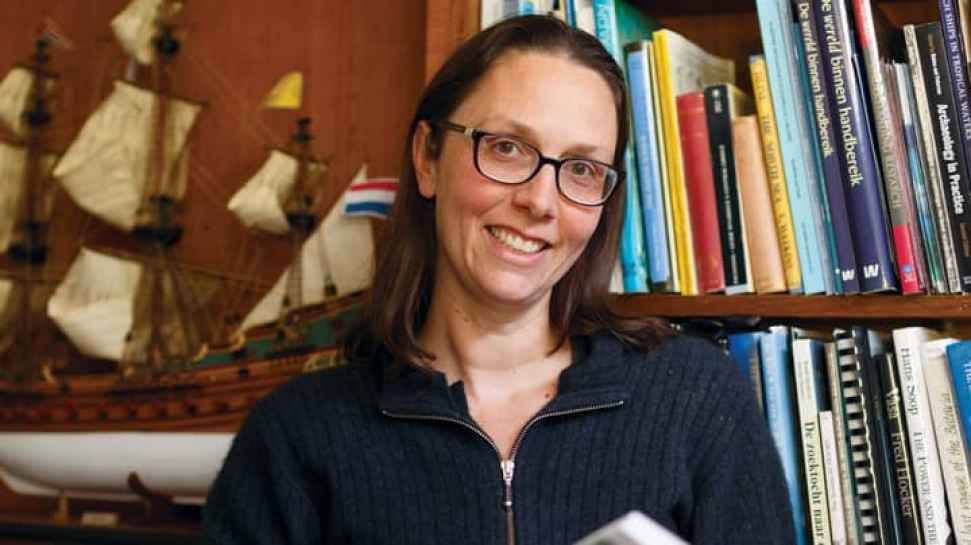Bill Condie
NAILED IT!
—
Detective work by a leading Flinders maritime archaeologist is revealing the secrets of a ship from Ancient Greece. And at the heart of it all are some humble copper nails.
All it took was a handful of nails and a few scraps of timber from the muddy seafloor off the coast of Turkey for maritime archaeologist Associate Professor Wendy van Duivenvoorde to build a fascinating picture of shipbuilding 2,500 years ago.
“You take all the clues into consideration. It’s a bit like a crime scene,” she says of the analysis she carried out on the remains of the Ancient Greek shipwreck at Tektas Burnu in western Turkey. “You have to look at all the components as part of the investigation.”
According to Associate Professor van Duivenvoorde, the nails offer a sense of how the vessel was built and how large it was, “and then, in conjunction with the cargo that was found on that particular ship, you gain an understanding of the whole civilisation at the time,”
she says.
The Tektas Burnu ship sank in about 45 metres of water between 440 and 425 BCE. Despite almost nothing being left of the soft pine timbers that once made up the hull, the find was important, giving a new understanding of craftsmanship at the height of the Athenian maritime empire.
The find also produced the only examples of marble ophthalmoi – the ship’s eyes – from an ancient shipwreck. It’s believed that these ‘eyes’ served a combined role as navigation aids and to ward off evil.

Dr Wendy van Duivenvoorde is an associate professor in maritime archaeology at Flinders University. Her current research is focused primarily on maritime trade and shipbuilding in the ancient Mediterranean and Northern Europe. Dr van Duivenvoorde is an expert in late sixteenth and early seventeenth-century Dutch shipbuilding and her studies primarily focus on ships of exploration and Indiamen, and include the archaeological remains of Western Australia's Dutch East Indiamen shipwrecks.
“The shipbuilders would drill a hole through the planking and the frame, and seal that with a wooden plug. They’d then drive the nail through into the direction of the grain.”
While it was already known that these features existed, experts assumed that they were painted on. “It was always thought that marble was too valuable to put on the bow of a ship, and that they were probably painted on or ceramic,” says Associate Professor van Duivenvoorde.
One hundred-odd copper nails and fragments of timber around them were found at the site, providing major clues as to the ship’s provenance.
“We know those nails were used for attaching the frames to the planking, because they built ships with shell-based construction methods at the time – not with a plank on a frame, as we would today if we were to build a wooden ship,” Associate Professor van Duivenvoorde explains.
‘Mortise-and-tenon’ joints were used to connect the planks, which hold everything together via the insertion of a rectangular piece of wood into opposing holes between two planks. The piece of the wood is called the tenon, and the holes in the planks are called the mortises. Once the ship’s hull, or ‘shell’, was assembled, pine frames were added for internal strengthening.
“The shipbuilders would drill a hole through the planking and the frame, and seal that with a wooden plug. They’d then drive the nail through into the direction of the grain,” says Associate Professor van Duivenvoorde. “We tested that, and it works quite well.”
Each nail was itself something of a work of art, she adds. “They’re not cast nails, they’re each individually hammered. They’re beautiful; the level of craftsmanship is something we don’t see today anymore.”
And they were practical, too. “Due to hammering, they become stronger. You hammer them, you heat them, and then you hammer them and heat them again. That can increase the strength of copper by 400 to 500%.”
There were likely no time restrictions in terms of the shipbuilding in Ancient Greece, says Associate Professor van Duivenvoorde, because wealthy people would pay for ships to be built. “They had a lot of slaves, so time was not an issue,” she adds.
While she can’t say for sure where the ship was built, she did locate where the copper was mined, tracing it to an area in Cyprus. “Of course, that doesn’t mean that the ship was built there, and we know that a lot of ancient copper was mined on the island of Cyprus,” she says.
The trees that provided the timber don’t help archaeologists narrow down the shipyard’s location either, being from a type of pine and oak that was then found throughout the region around the Aegean Sea. “We think it was built somewhere along the Turkish coast, or the Aegean Turkish coast, but we don’t know 100% for certain,” she adds.
It’s only fitting that a shipwreck discovery of this magnitude keeps a few more secrets up its sleeve.
![]()
Sturt Rd, Bedford Park
South Australia 5042
South Australia | Northern Territory
Global | Online
CRICOS Provider: 00114A TEQSA Provider ID: PRV12097 TEQSA category: Australian University











